Content
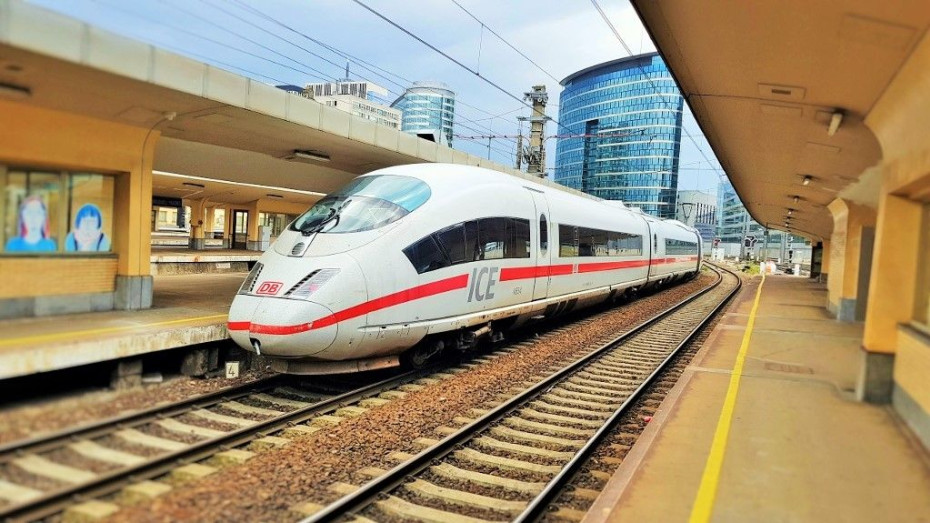
ICE 3 - the original (Germany)
If you will be taking a trip by these ICE 3 trains this guide will tell you how to make the the most of the journey experience.
Share
At a Glance
Travel Pass Supplement
Rail Pass Reservation Fees
Reservations
Available
Time of Day
Day
Catering
Food services available
Bistro (bar food and take away meals)
Restaurant
Accessibility
Accessing the train
Wheelchair Spaces
Train Specification
Attributes of the train
High Speed (partial journey)
Has a Conductor
Country
Which country these trains operate in.
Belgium
Germany
Netherlands
Travel Passes
Eurail
InterRail
On Board
1 (1.klasse)
Perks
WiFi
A complimentary WiFi portal is available throughout this train.
Power Socket
The power sockets on this train are compatible with standard E.U. two point plugs.
At Seat Catering
According to the time of day of travel, passengers will be able to choose from a menu of catering options, which will then be served at their seats.
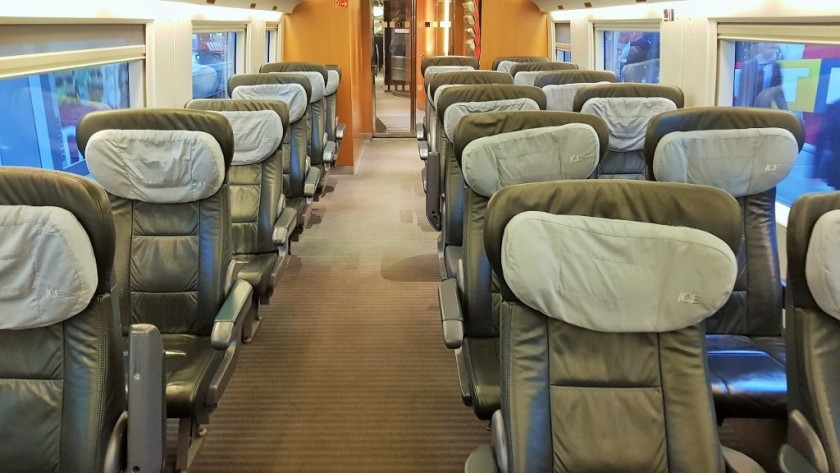
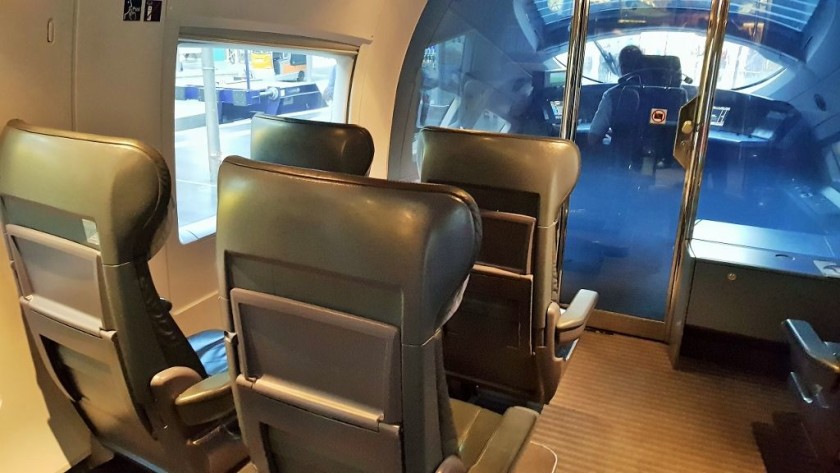
An attendant will also pass through 1st class taking orders for food and drink to be delivered to your seat – try to avoid confusing them with the conductor who will check the tickets etc.
Be aware that you will be charged for all items that you order.
2 (2.klasse)
Perks
WiFi
A complimentary WiFi portal is available throughout this train.
Power Socket
The power sockets on this train are compatible with standard E.U. two point plugs.
Good to know info
ShowMeTheJourney has anticipated what questions are most often asked about travelling on these ICE-3 trains managed by the German national rail operator, DB.
If you can't find the information you are seeking, you can ask a question and the AI enabled service will try to write an answer, telling you what you wish to know.
How fast does the train travel?
These trains have a capability to travel at up to 330 km/h (205 mph), but during their journeys they typically travel at up to 290 km/h (180 mph) on these high speed lines, particularly when they are used on the faster 'Sprinter' services:
- Halle / Leipzig ↔ Nurnberg
- Seigburg/Bonn ↔ Frankfurt Flughafen
- Nurnberg ↔ Ingolstadt
On these other high-speed lines:
- Liege ↔ Aachen
- Hannover ↔ Wurzburg
- Mannheim ↔ Stuttgart
- Karlsruhe ↔ Offenburg
- west of Ulm
they typically have a top speed of 270 km/h (165 mph).
When not travelling on the high speed lines, the maximum speed is 200 km/h (125 mph).
Are seats allocated when booking tickets?
Reservations are now only automatically included in these scenarios:
- for international journeys between Germany and Austria, Belgium and The Netherlands from 1 June to 1 September.
- when booking Flexpreis Plus tickets for 1st and 2nd class travel - these are the most expensive types of ticket sold by DB.
When booking any other type of ticket between September 2nd and May 31st, reservations can be added for an additional fee.
Can specific seats be selected from a seating plan?
Yes, this is typically available when both opting to reserve and in the scenarios when seats are automatically assigned.
If your preferences include seats at tables or seats in Quiet zones, you will need to use the seating plan.
Do Eurail / InterRail users need to make reservations?
Now that these trains aren't used for international journeys, they are always optional.
What catering is available on the train?
These trains have a bar/bistro service and a restaurant car is also available.
A non-complimentary at-seat catering service of the full menu is available in First class.
Is Wi-Fi available?
Yes - it is available free-of-charge in both 1st and 2nd class.
Are power sockets available?
Yes and the sockets are compatible with standard EU plugs; Every 1st class seat has socket, but there is one socket per pair of seats in 2nd class.
Is a Quiet Coach available?
These trains have 'Quiet zones' in both 1st and 2nd class, though to ensure your seats(s) are either located within or outside of the areas on the train in which mobile calls aren't permitted, it's best to opt to reserve and then use the seating plan.
What is the luggage policy?
In addition to hand luggage, one additional larger piece of luggage or item can be taken on board of charge, provided this load can be carried by one person alone.
The luggage racks on the train have been designed to handle a maximum item size of 700 x 500 x 300 mm (height x width x depth).
Are wheelchair spaces available?
Yes and they are located within a 2nd class coach by the mobility accessible toilet.
Can non-folding bicycles be taken on board?
Non-folding bicycles cannot be taken on these trains though when you look up a journey on DB, you can add the bike option - and won't then be offered trains without the bike racks.
Can dogs be taken on board?
Small dogs which can be placed in pet-carriers can be taken on board any train as hand luggage and there is no charge for doing so.
Dogs which can't be fitted in carrier/container, because they are larger than a typical domestic cat, require tickets,
So when booking online for a journey by ICE or IC trains with DB, the German national rail operator, add a larger dog as 'a passenger'.
The price charged will be 50% of the adult rate
If you want to travel 1st class you will need a 1st class ticket for the dog.
The different types of ICE 3 train:
Technically there are four different types of ICE 3 trains:
(1) The 403, which is used on most non-international ICE-3 routes in Germany.
(2) The new generation of ICEs are the 'neo trains'
They are in effect an improved version of the 407 trains, with multiple enhancements including a red light (reserved) green light (available) system, but a key difference is that they are the only trains in the ICE3 'family' to be fitted with bike racks.
Up to 8 non-folding bikes can be accommodated in the space at the far end of the 2nd class seating area.
All spaces must be reserved prior to boarding.
(3) The 407, also known as the 'Velaro D', which is used on the Frankfurt - Paris DB-SNCF routes, and on a small percentage of services in Germany, particularly on the Dortmund - Dusseldorf - Koln Messe/Deutz - Frankfurt Flughhafen/Airport - Stuttgart - Ulm - Munchen route
The on board experience is markedly different on those 407 trains.
Aside from the family compartment, all seats are in open plan saloons - but they don't have the lounges at either ends of the train.
(4) The 406, which for the time being can still be used on the routes between Germany and both Belgium and The Netherlands.
Though from a passenger point of view, the travel experience is virtually identical to being on a 403 train.
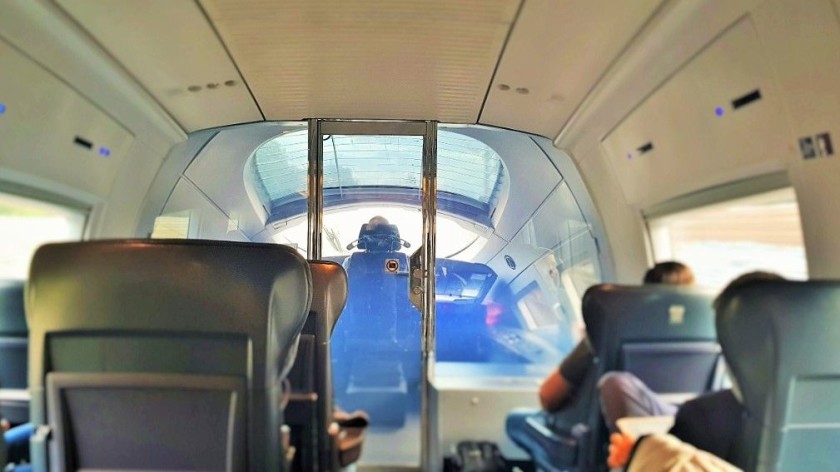
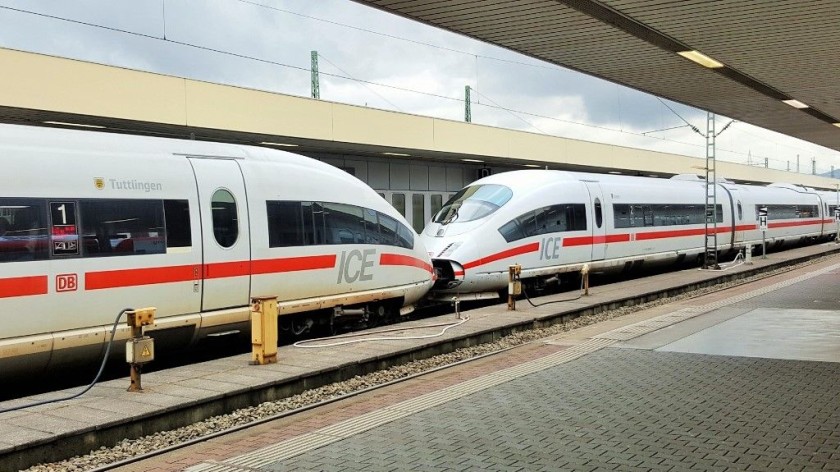
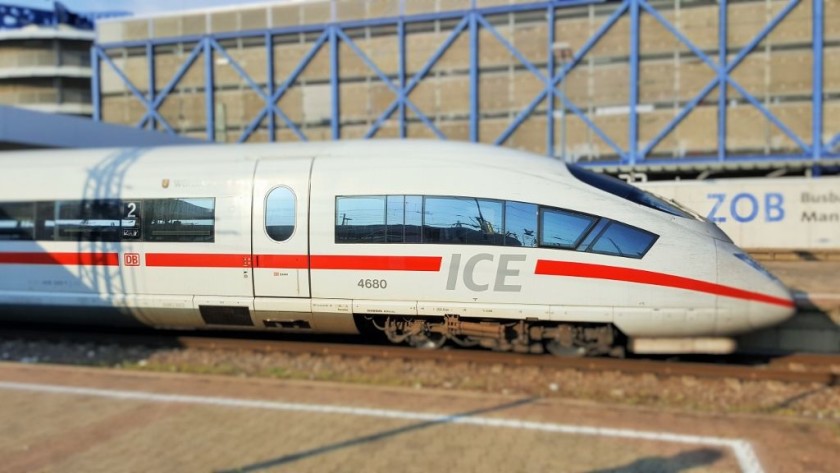
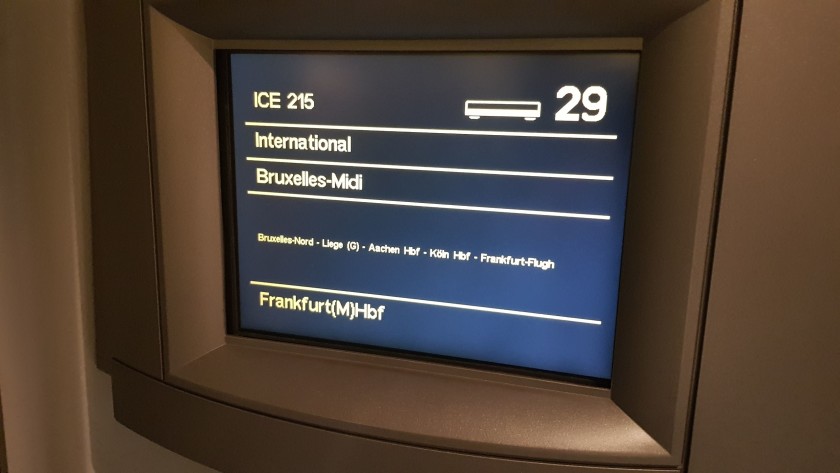
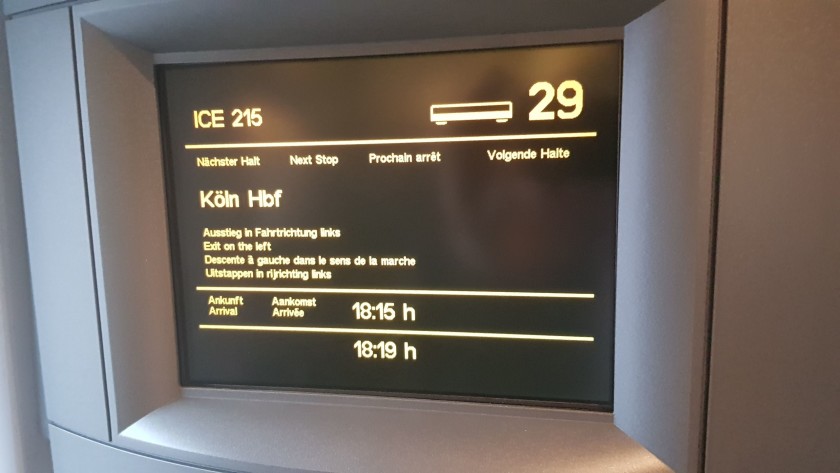
ICE 3 travel guide:
ICE 3s are the fastest high speed trains in Germany.
They are the only trains capable of using the 300 km/h high speed line between Koln and Frankfurt, so they are mainly found on services that use this line.
These include the ICE services between Germany and both Amsterdam and Bruxelles.
Though they now also travel at up to 300 km/h on the newest high speed route between Erfurt and Nurnberg.
Routes:
The original ICE 3 trains are now mainly used on just these four routes:
*=all departures
(1) Munchen – Nurnberg – Wurzburg - Frankfurt Main – Frankfurt Flughafen – Koln Messe/Deutz – Dusseldorf – Essen – (Dortmund)*; the Velaro trains are also used on this route
(2) Munchen - Nurnberg - Erfurt - Berlin - (Sprinter services)*
(3) Munchen - Augsburg – Ulm - Stuttgart - Karlsruhe (- Freiburg - Basel)
(4) ICE 'Sprinter' Service: Berlin - Erfurt - Frankfurt (Main); a few departures
The refurbishment program:
Few would argue that these train set the benchmark for European high seed trains, both inside and out.
The internal glass walls and sliding glass doors give these trains the wow factor.
However, some ICE3s are showing signs of wear and the air-conditioning in particular can be temperamental.
Hence the announcement that these trains are to be refurbished over the next couple of years.
The modernised trains have a yellow stripe by the doors on the 1st class coaches.
They also a new seat reservation display - with the occupancy information on the head rests of the seats, facing the corridor.
The trains have new seats and an enhanced bistro area with seating - a similar concept to the seating area of restaurant cars on the ICE 1 trains.
Other features include an enhanced family compartment and more space for wheelchairs.
There's no way of knowing you will be travelling on a refurbished train when booking, but around 60% of the trains have currently been modernised and the work is due to be completed by the end of 2021.
Reservations:
Reservations are now only automatically included when upgrading Flexpreis tickets to 1st class, or when booking Flexpreis Plus tickets for 1st and 2nd class travel.
When purchasing the cheaper Super Sparpreis and Sparpreis tickets for journeys by express train, you can opt to either:
- travel 2nd class and add a seat reservation for an additional fee of €5.20.
- book 1st class / upgrade a 2nd class ticket to 1st class and add a seat reservation for an additional fee of €6.50.
When booking Flexpreis tickets for travel in 2nd class, you can add a seat reservation for an additional fee of €5.20.
If your journey involves more than one ICE train, you will only have to pay one reservation fee, as it will cover all the trains you will be taking.
It is also possible to book reservations at a later date separately from the ticket booking, both online or by using DB branded ticket machines at stations.
Although if you do book your reservations later and your journey involves more than one train, you will then have to pay for separate reservations per train.
Select specific seats
When you opt to reserve, or automatically assigned reservations when booking 1st class Flexpreis tickets/ Flexpreis Plus tickets, DB tends to assign seats randomly.
So if you want your seats to be:
- by a window or on the aisle
- adjacent to a luggage rack
- in a compartment (when available)
- in a Quiet Zone; 1st class in coach 29/39, 2nd class in coach 21/32
- at a table
you can select any seats which are still available on the seating plan
Note that facilities such as compartments and Quiet Zones may be in an entirely different coach / carriage to that in which the seats you have been initially assigned are located.
All ICE trains have family compartments and / or family areas in 2nd class, but when making a booking for a party of adults + children, if you opt to add a reservation, you won't automatically be assigned seats in these family areas.
So you will need to find and select them (when still available) on the seating plan.
On ICE 3 trains they are both in coach 25/35.
If you have not reserved the availability of seats is NOT guaranteed - if need be walk through the train to find available seats
Boarding and finding a seat:
Seven Things Worth Knowing When Boarding an ICE-3 train:
(1) Two ICE3 sets are often joined together to make one extremely long 16 coach/carriage train.
Therefore aim to be on the platform/track/gleis at the station at least 5 minutes before departure, particularly if you will be joining the train at an intermediate station.
Give yourself time to figure out where you should wait on the gleis (platform/track) prior to boarding.
(2) If you have a reservation before arriving on the gleis (platform/track), check your ticket for the number of the coach in which your reserved seat is located.
Then use the info screens on the gleis, to check in which zone on the gleis you should wait, for easy boarding.
(3) When two trains are joined together, it isn’t possible to walk entirely through the train from one end to the other.
Another good reason for not boarding by the first door you see because you are rushing.
(4) Some coaches/carriages only have one door, while others have two.
(5) A number ‘1’ by the doors indicates that the coach is 1st class, while a ‘2’ indicates second class.
On the yet to be refurbished trains, these numbers are the only external indication of whether a coach is 1st class and vice versa and they can be hard to spot on a fast arriving train.
Though yellow stripes by the doors are being added to indicate the location of 1st class.
Below these numbers (1 or 2) are electronic indicators which show the destination of the train and the main stations it will be calling at.
(6) If you haven't reserved seats, a less obvious aspect of travelling by ICE 3 trains is that they have 'Quiet' and 'Phone' zones'
So look out for the signs on the exterior and interior of the trains indicating whether a particular coach has these zones.
You can then either target or avoid seats in these areas.
(7) The doors won’t open automatically so you may have to press the green button.
Four Things to be aware of when finding a Seat:
(1) Reservations are indicated by red text next to seat numbers that show the stations, between which the seat has been reserved.
These seat numbers are located on a strip below which runs along the edge of the above seat luggage racks.
So if you board a Dortmund – Munchen train at Dortmund Hbf and see Dortmund – Munchen by a seat number, then this seat will be occupied for the entire journey.
However other seats may only be reserved between Koln and Munchen, so if you’re travelling from Dortmund to Koln you can sit in this seat.
(2) Seat numbers that have no text beside them or have 'bahn comfort' displayed are available for all or the remainder of the journey.
(3) You may see 'ggf. freigeben' displayed which indicates that a seat MAY be free, but avoid these seats if possible, as in our experience it usually means that the seat won't be free for the entire journey.
(4) An unusual feature is that the red text turns itself off 15 mins after the train has departed, from a station from which the seat is reserved.
The logic being is that that if the holder of the reservation doesn’t claim the seat, then passengers without reservations who board at the next station will know that the seat is available.
So if you do have a reservation and are travelling alone, take care to not be absent from your seat when the train calls at stations
On board:
Most seats are in open plan saloons, but some seats are arranged into compartments - one of which is set aside for family use.
There are also seats in lounges at each end of the train, one 1st class and one 2nd class, which give a view down the track.
This view down the track can be particularly thrilling on high speed lines, but only if the driver doesn’t mist the glass between the passenger lounge and the driving cab.
Having the glass misted seems to be more common these days, so if you’re not interested in the track views, avoid these lounges, the main seating saloons feel less cramped.
There are luggage racks by the doors AND in the middle of the 1st class seating saloons.
It can be worth travelling 1st class if you have heavy luggage, as there is more space in which to store it.
Quiet zones:
If you haven't reserved, check whether you happen to be sitting in a 'Quiet Zone', if you are the conductor, or your fellow travellers, will ask you not to make or receive calls during your journey.
Power sockets:
The power sockets can be hard to find on ICE3 trains.
They are in the arm rests, under the control panels for the on-board audio service.
Wi-fi:
They have Wi-Fi access - but data usage can be more restricted in 2nd class.
On international services you may to have log in again to access the Wi-Fi when the train crosses a border.
Catering:
There is no trolley catering service on ICE trains.
If you are travelling 1st or 2nd class you can opt to purchase hot/cold food and drink from the bar/bistro car and then either consume it in the bistro car or bring it back to your seat.
Travelling 1st class:
An attendant will also pass through 1st class taking orders for food and drink to be delivered to your seat – try to avoid confusing them with the conductor who will check the tickets etc.
Be aware that you will be charged for all items that you order at your seat.
If you’re travelling 1st class and are particularly thirsty/hungry, don’t wait for the catering attendant to make their round, go to the bar counter and order in person.
Worth knowing:
On ICE trains glasses and china plates and cups are used and not paper and plastic.
Very classy and probably more eco-friendly too, but take care!
It is not unknown for items to fly off tables when brakes are applied or when trains take corners at high speed
Bicycles:
Only folding bikes can be taken on board the overwhelming majority of ICE 3 trains, but the new 'neo trains' which are no entering service, are equipped with racks for eight non-folding bicycles.
This second version of ShowMeTheJourney is exciting and new, so we are genuinely thrilled that you are here and reading this, but we also need your help.
We’re striving not to let anything get in the way of providing the most useful service possible, hence a facility has been set up with DonorBox which can be used to support the running costs and make improvements.
Instead of advertising or paywalls, your financial support will make a positive difference to delivering an enhanced service, as there’s a lot of ideas which we want to make happen.
So if you have found the info provided here to be useful, please consider saying thank you.

This is one of more than 100 train travel guides available on ShowMeTheJourney, which will make it easier to take the train journeys you want or need to make. As always, all images were captured on trips taken by ShowMeTheJourney.



